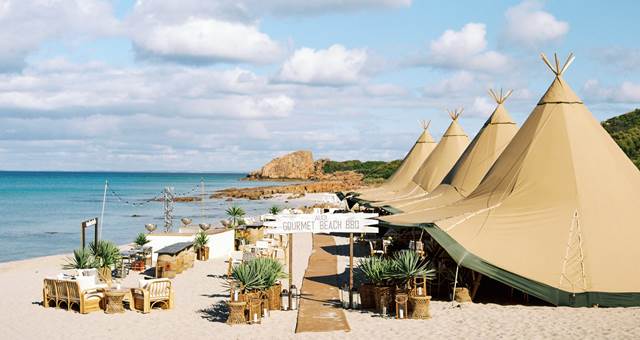
By Kristina McCoobery, co-founder and COO at INVNT
While the topic of sustainability isn’t exactly new, with a fresh report released or news story published that highlights the plight of our earth on any given day, it’s never been more important that we weave sustainable practices throughout all aspects of our lives.
As event professionals we’re blessed with the opportunity to leverage our skills to educate our clients and their audiences about sustainability, and there are various tactics we can adopt to minimise our environmental impact, including these five below.

Plan ahead, and standardise
Implementing environmental initiatives isn’t an overnight job – it requires buy-in from all key stakeholders and senior management, and there are a number of logistical elements to consider. Make sustainability a key action item on your agenda when planning the event from the very start and leverage the expertise of your teams to create an achievable timeline.
Build out a step-by-step plan with key tactics and corresponding goals that you can gradually implement across events throughout the year. The learnings you take from these experiences can then be used to create a sustainability guide which the wider organisation can call upon for different clients and events in the future.
Push the creative envelope
When INVNT was a start-up back in 2008 we had limited resources to work with, and this made us more creative – the approach differentiated us from our larger, more established competitors, and it’s something that our clients loved and continue to love about us. The same approach can be applied to sustainability: consider the ways you can re-purpose materials you’ve used to create the stage, booth, pop-up or other space for a client’s event.
Take a look at the schedule of events you’re working with them on over the next, say, 24 months and get brainstorming. You’ll not only potentially produce more compelling experiences that impress the client and resonate with their audience, you’ll help keep costs down.
Identify sustainable partners
From strategists and planners to stationary providers, event tech specialists and venues, we’ve all got suppliers we enjoy working with because the products and services they provide are always second to none. Chances are, just like sustainability is on our radar, these existing partners are upping their sustainable credentials too.
Ask them about these so that you can incorporate them into your events. For example, they might have created a user-friendly event app that eliminates the need for any printed materials on-site, and take the time out to conduct some research into those smaller, more niche local suppliers who advocate for sustainability.
Educate and demonstrate
Sustainability is a scary concept for a lot of people because they don’t know enough about it and it’s too confusing or daunting for them. Use your events as an opportunity to walk them through some simple tactics they can adopt to lead more sustainable lives.
This could be by curating partners who demonstrate some of these practices first-hand – from creating a compost to the ways people can alter their diets to incorporate more veggies and eat less meat. Adding signage – and opting for digital signage at that – around recycling stations that showcases which products go where, and general venue signage that directs people to recycling stations and water fountains are other simple yet effective tactics.
Sustenance with substance
The impact of food wastage on our environment is immense, so look to reduce portion sizes and up the number of attendee break times, as that way people will know when they are full and will be less likely to overload their plates, and partner with venues and charities that donate leftover food to those in need.
Minimise the number of meaty dishes on the menu and up your tasty vegan and vegetarian options – you could even get an expert in who can run through predictions around food trends for the future (insects, anyone?!). Avoid using plastic anything – plates, cutlery, cups and straws – and for packaging, opt for products that are made from recycled cardboard.
Instead of paper or laminated food and drink menus and signage, look to make all of these digital. If a product runs out, caterers and suppliers with be able to update their offerings in a much more aesthetically pleasing way too – no one likes a menu item strikethrough!
As the designers and producers of experiences for hundreds of thousands of people – on behalf of some of the world’s most renowned brands – each year, we’re in a unique position to educate, influence and encourage both our clients and audiences to adopt sustainable practices. So, let’s leverage our professional expertise to help make a difference to the world – we’ve only got one earth, after all.
INVNT is a US-based experiential agency, with offices all over the world. The company strives to “challenge everything” and takes an innovative approach to brand communications and live events.





